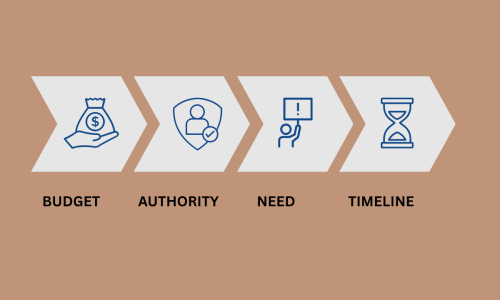When we think about getting quality leads, Account-Based Marketing (ABM) has emerged as a strategic approach for B2B marketers to target and engage key accounts effectively.
Unlike traditional marketing methods, ABM focuses on personalized outreach and tailored campaigns to nurture high-value relationships with specific accounts.
This article goes into successful account-based marketing methods that may help firms target critical accounts and boost revenue.
1# Account Selection
Choosing the right target accounts is a crucial first step in any successful ABM strategy. Rather than casting a wide net, ABM focuses on identifying and prioritizing accounts with the highest potential for revenue and long-term partnerships.
To select the most suitable accounts, businesses must conduct thorough research and analysis to understand their ideal customer profile (ICP) and strategic objectives. Evaluating criteria such as firm size, industry, revenue potential, and alignment with products helps lead to effective account selection.
For example, a software-as-a-service (SaaS) company targeting enterprise clients may prioritize accounts in the technology, finance, and healthcare sectors, where there is a higher demand for their solutions and a greater likelihood of success. By leveraging market intelligence tools, industry reports, and internal data, businesses can identify accounts that match their ideal criteria and have the highest propensity to convert into valuable customers.
2# Personalized Outreach
Once target accounts have been identified, the next step in ABM is to engage with key stakeholders through personalized outreach. Unlike traditional marketing approaches that focus on mass communication, ABM emphasizes building meaningful relationships with decision-makers and influencers within the target accounts.
Personalized outreach involves tailoring marketing messages and content to address the specific needs, pain points, and interests of each target account. This may include crafting customized email campaigns, personalized landing pages, and targeted advertising content that resonates with the unique challenges and priorities of the account.
For example, a marketing automation platform targeting e-commerce businesses might create personalized email campaigns for each target account, highlighting how their platform can help improve conversion rates, increase customer engagement, and drive revenue growth. Addressing specific pain points of the target account makes marketing messages more likely to capture stakeholders’ attention and initiate conversations.
3# Relationship Building
In ABM, relationship building is essential for nurturing long-term partnerships with key accounts. It involves establishing trust, credibility, and rapport with decision-makers and influencers through personalized interactions and ongoing communication.
For instance, a software company targeting enterprise clients might organize exclusive networking events or roundtable discussions to facilitate meaningful conversations and relationship-building opportunities with key stakeholders.
By providing valuable insights, thought leadership, and personalized attention, businesses can strengthen their connections with target accounts and lay the foundation for successful partnerships.
4# Content Personalization
In ABM, content personalization involves tailoring marketing materials and messaging to resonate with the specific needs, pain points, and interests of target accounts. Customized email campaigns, landing pages, whitepapers, and case studies address the unique challenges faced by each account.
For example, a cybersecurity firm targeting financial institutions might develop content that highlights industry-specific security threats and compliance requirements, demonstrating how their solutions address these concerns. By delivering relevant and personalized content, businesses can capture the attention of key decision-makers and drive engagement with their brand.
5# Account-Based Marketing Technology
Utilizing technology is essential to implementing ABM tactics effectively. ABM platforms, customer relationship management (CRM) systems, and marketing automation tools help streamline processes, track interactions, and measure campaign effectiveness.
For instance, ABM platforms like Demandbase and Terminus enable marketers to identify target accounts, personalize content, and orchestrate multi-channel campaigns. These tools empower teams to deliver tailored experiences at scale, driving engagement and revenue growth.
6# Cross-Channel Engagement
In ABM, engaging prospects across multiple channels enhances visibility and reinforces messaging. Combining email, social media, events, and direct mail ensures a comprehensive approach.
A company may employ LinkedIn ads to target decision-makers, then engage with personalized emails and invite them to webinars. This multi-channel strategy maximizes touchpoints and fosters deeper connections with target accounts.
7# Account-Based Sales Alignment
Aligning sales and marketing teams is crucial for ABM’s success. By collaborating closely, they can tailor messaging and coordinate outreach efforts effectively.
For example, sales reps can provide valuable insights on target accounts, enabling marketers to create personalized content and campaigns. This alignment ensures a unified approach, driving engagement and conversions.
8# Continuous Optimization
ABM campaigns require ongoing monitoring and refinement to maximize results. Marketers should analyze data regularly, adjusting strategies based on performance metrics.
For instance, if certain accounts show low engagement, they can tweak messaging or channels to improve resonance. This iterative approach ensures campaigns remain effective and relevant over time.
Conclusion
Effective ABM tactics are essential for businesses looking to target and engage key accounts successfully. Organizations can achieve long-term success in a competitive market by taking a strategic approach to account-based marketing, employing individualized outreach, and deploying sophisticated technologies.
If you want to use these ABM tactics to focus on ABM marketing, we are here to help. To learn more, contact us now.
FAQs
How do I select the right accounts for ABM targeting?
Start by identifying accounts that align with your ideal customer profile and have a high potential for revenue growth.
What personalized outreach strategies work best for engaging key accounts?
Tailor your messaging and content to address the specific pain points and needs of each target account.
How can relationship-building tactics enhance ABM’s success?
Building trust and rapport with key stakeholders within target accounts can lead to stronger partnerships and an increased likelihood of conversion.
What role does content personalization play in ABM campaigns?
Personalized content resonates better with target accounts, increasing engagement and driving higher conversion rates.
Which technologies are essential for implementing effective ABM tactics? Answer: ABM platforms, CRM systems, and marketing automation tools are crucial for tracking and managing interactions with target accounts.










